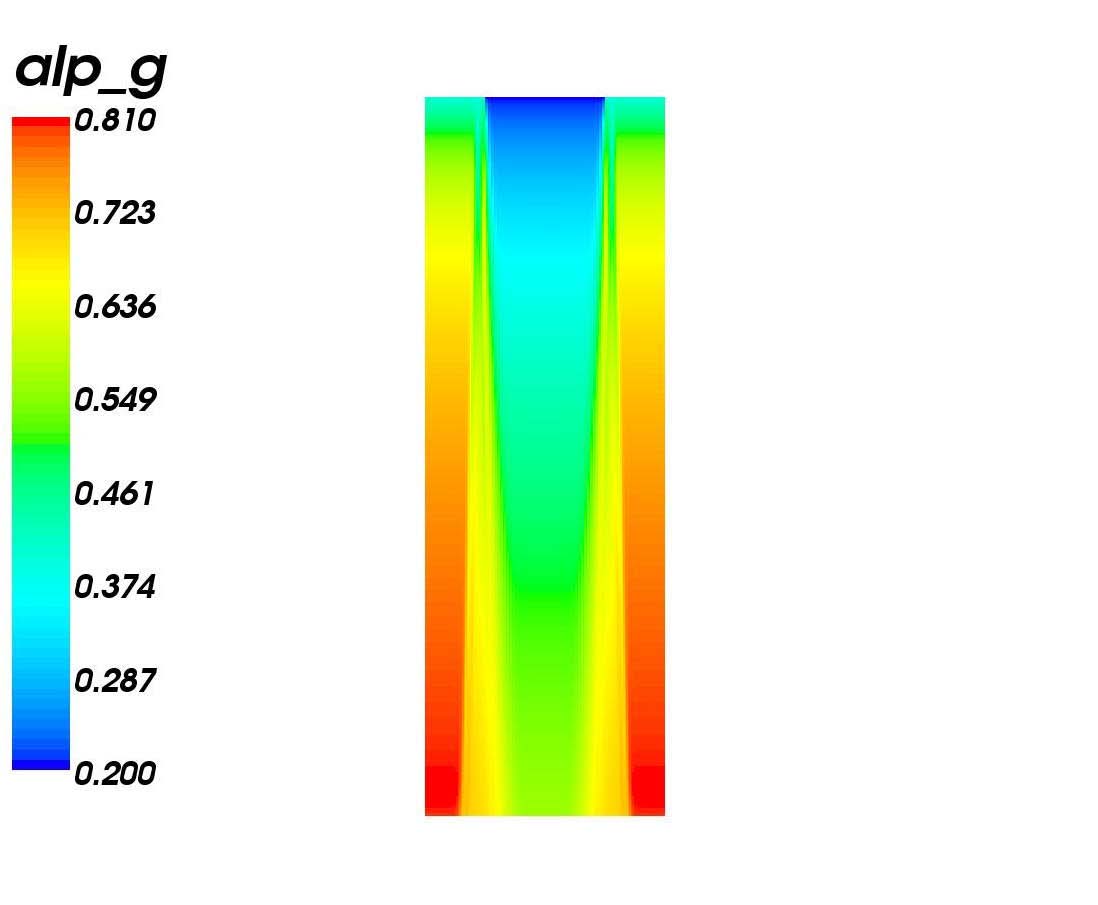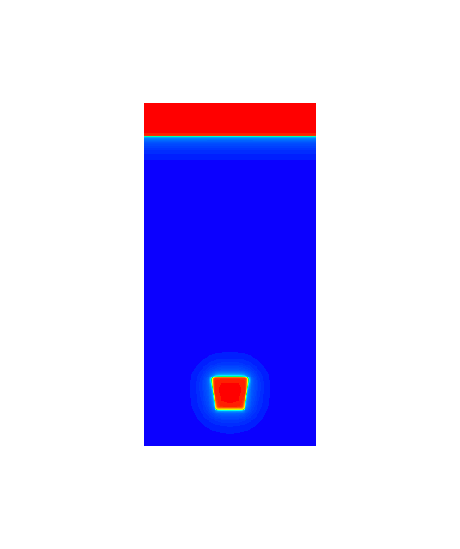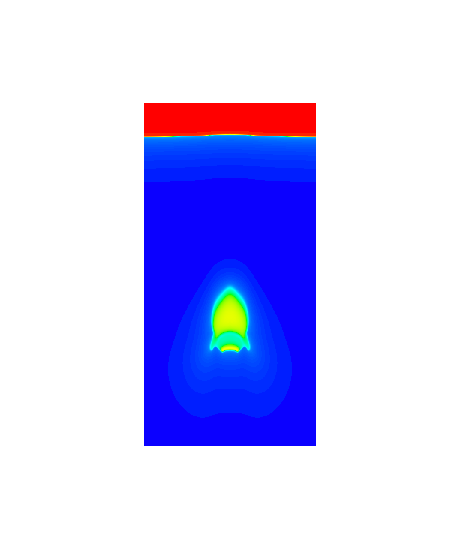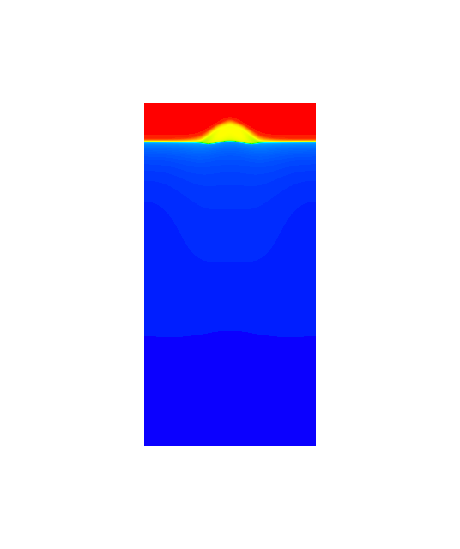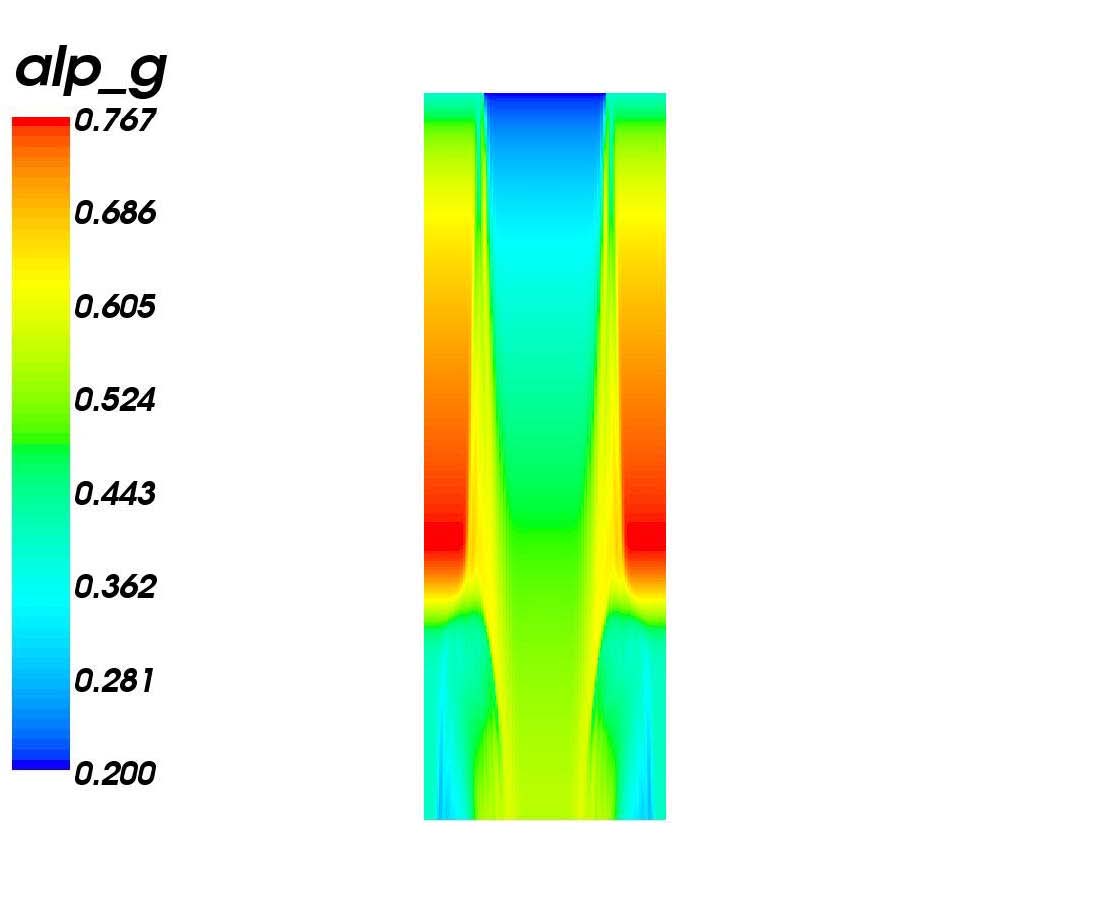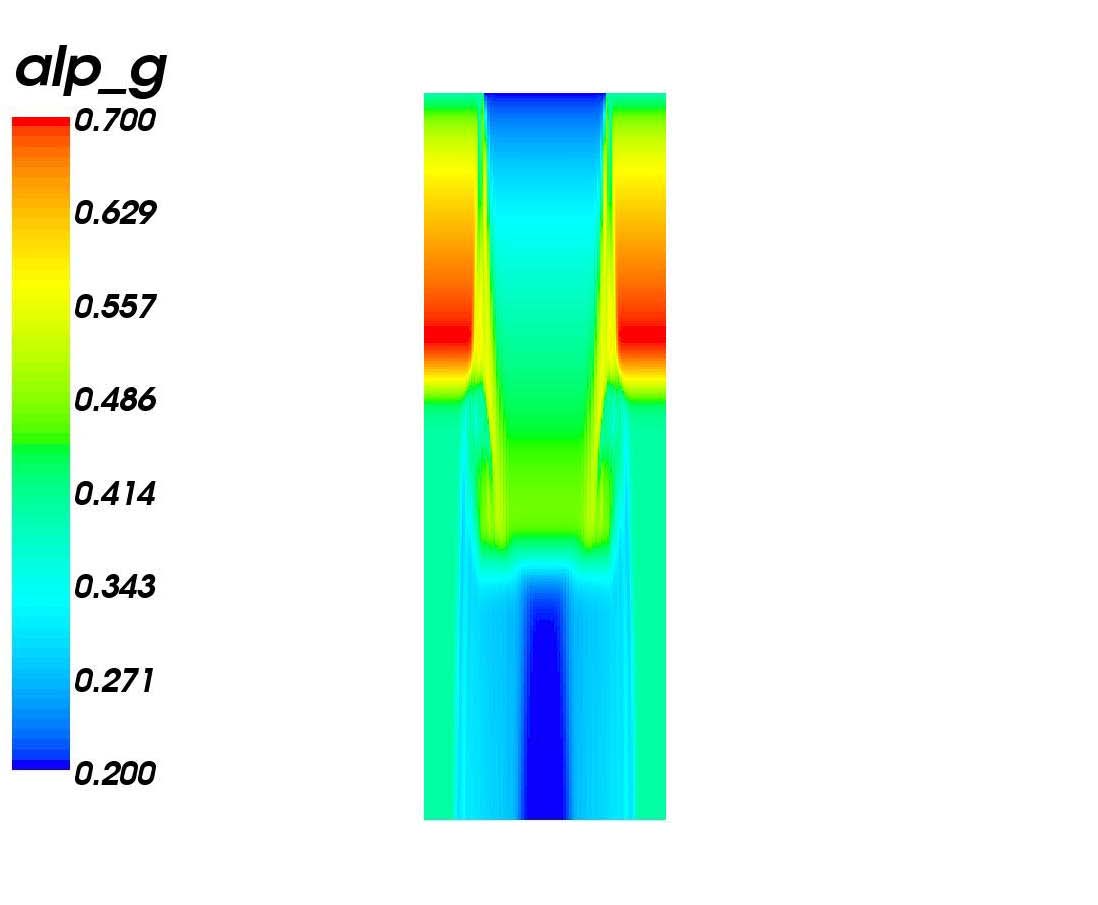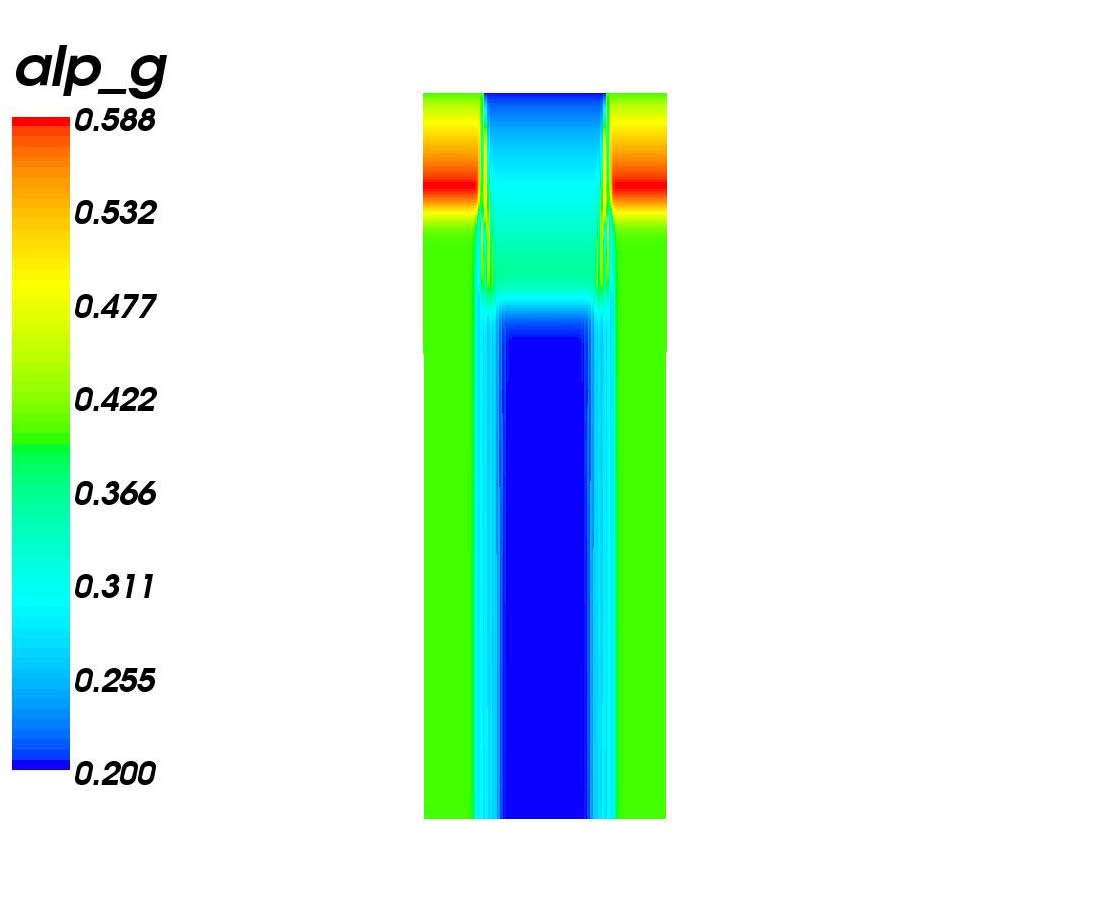*******************************************************************************************************************
Two-phase gas-liquid models
Current focus is on two-phase gas-liquid type of models motivated by petroleum related multiphase flow dynamics. In particular we are interested in the following topics:
- Development and evaluation of two-fluid models for various applications
- Development of efficient numerical methods for solving two-fluid models
- Mathematical studies of simplified gas-liquid models
Generally
Multiphase flows have a very broad application far beyond porous media flow and well/pipeline transport phenomena. In fact it has been estimated that over half of anything which is produced in a modern industrial society depends to some extent on a multiphase flow process. In nature, there is a wealth of different multiphase flow phenomena. Examples are sediment transport, geysers, volcanic eruptions, acquifiers, clouds and rain. In addition, multiphase flow also naturally appears in many contexts within biology, ranging from tumor biology and anticancer therapies, development biology and plant physiology.
Mathematical modelling based on using PDEs is playing an increasing role in many different contexts. The class of PDEs in question describes complicated multi-scale phenomena that cannot be solved analytically. However, nonlinear analysis allows us to obtain a deeper understanding of basic mechanisms in increasingly complex models. Computational results feed back into the modelling process since it is possible to obtain solutions for more general models and thereby provide insight into the role played by the different terms and the internal balance between them (convection, diffusion, pressure gradient, frictional sources, etc.). Ultimately, this provides insight into detailed mechanisms related to concrete applications which often cannot be studied by real life experiments.
Averaged two-phase models
Multiphase flows inherently involve a multiplicity of both temporal and spatial scales. Phenomena at the scale of single bubbles, drops, solid particles, capillary waves, and pores, determine the behaviour of large chemical reactors, energy production systems, oil and gas extraction, as well as the global climate itself.
Modelling of multiphase flows can be divided into different categories depending on the level of details that are included. Our focus is on averaged-equations type of models where the detailed description of the multi-scale behaviour has been given up, and the aim is to give a good averaged description. The unresolved phenomena are accounted for by adding appropriate closure laws.
More precisely, the class of models we focus on is gas-liquid models where both phases can be present at the same point in space, often denoted as two-fluid models, in contrast to single-fluid models where phases do not co-exist but occupy different points in space.
In particular, two-fluid models have been used extensively within the petroleum industry to describe highly complicated well and pipeline flow processes. These models are natural choices when one is interested in quantities like pressure drop and gas and liquid volume fractions (averaged mass distribution), rather than a very detailed flow topology. 1D-models is mostly used for these applications.
These models appear as a system of PDEs together with closure laws (typically algebraic equations) to account for relevant thermodynamic behaviour, information about fluid velocities (slip relation), and frictional forces. The phases are treated as compressible fluids that are more or less sensitive for pressure gradients depending on the equations of state. It's challenging to solve these models in an accurate and stable manner. Slow mass waves are involved as well as very fast pressure waves. Transition from two-phase to single-phase regions appears and disappears in a complicated manner. Compression and decompression of the phases often represent important driving forces together with strong effects from source terms representing friction forces.
Mathematical Analysis of Simplified Two-Phase Models
Analysis of compressible single-phase gas flow models (Euler and Navier-Stokes) has been the subject for a vast amount of research performed during the last two decades. Different aspects that have been studied are: Existence of weak solutions under various assumptions on initial data, regularity and uniqueness of solutions, long time behaviour, treatment of vacuum states, detailed study of the interface separating the gas and vacuum, just to mention a few.
The analysis of compressible gas-liquid type of models is much more immature. Many new challenges appear compared to the single-phase case. Some central questions are:
- How to treat the more complicated relations between pressure and densities typical for two-phase models?
- What are possible problems associated with transition from two-phase to single-phase flow regions (singularities)?
- What is the role played by the use of unequal fluid velocities?
- What model formulations give basic energy estimates?
- How to treat non-conservative terms appearing in some of the models?
Numerical Methods for Two-Fluid Models
Multiphase flow has been a research area for more than 30 years. However, still there are many challenges to be solved. We refer to the recent book by Prosperetti and Tryggvason [14] for a nice overview over different multiphase models and numerical methods. For the two-fluid model we focus on in this proposal different approaches that have been taken are [1-7,11,18]:
- Riemann based methods (Roe, Godunov, …)
- Riemann free methods (AUSM type of methods, MUSTA, …)
- Semi-implicit methods (WIMF, Olga, …)
The main idea of the WIMF method (see [5] for details) is to combine aspects from
(i) pressure-based approaches where momentum equations are solved together with a pressure evolution equation in an implicit manner [13,18];
(ii) use of techniques from the theory of conservative and non-oscillatory methods for hyperbolic conservation laws [19,20].
Having developed a first-order WIMF method for a gas-liquid setting with simplified equations of state, focus is now on various extensions that allow the method to be used for more realistic simulations.
Models for specific applications
Relevant publications
[1] S.Evje and K.K Fjelde, Hybrid Flux-Splitting Schemes for a Two-Phase Model, J. Comp. Phys., 175, 674-701, 2002.
[2] S.Evje and K.K Fjelde, Relaxation Schemes for the Calculation of Two-Phase Flow in Pipes, Math. Comput. Modelling, Vol. 36 (4/5), 535-567, 2002.
[3] S.Evje and K.K Fjelde, On a rough AUSM scheme for a one-dimensional two-phase model, Computer & Fluids, vol 32(2003).
[4] S.Evje and T. Flåtten , A mixture flux approach for the approximation of a common two-fluid model, J. Comp. Phys., 192, 175-210, 2003.
[5] S.Evje and T. Flåtten, Weakly implicit numerical methods for a two-fluid model, SIAM Sci. Comput., vol. 26 (2005) No. 5, pp. 1449-1484.
[6] S.Evje and T. Flåtten, Hybrid central-upwind schemes for numerical resolution of two-phase flows, ESAIM: Math. Mod. Num. Anal., vol. 39 (2005), No. 2, pp. 253-273.
[7] S.Evje and T. Flåtten, CFL-violating numerical schemes for a two-fluid model, J. Sci. Comput. Vol 29 (1), 83-114, 2006.
[8] S.T. Munkejord, S. Evje, T.Flåtten, The multi-staged centred scheme approach applied to a drift-flux two-phase flow model, Int J Num Meth Fluids, vol 52 (6), 679-705, 2006.
[9] S.Evje and T. Flåtten, On the wave structure of two-phase flow models, SIAM J. Applied Math. Vol 67 (2), pp. 487--511, 2007.
[10] S. Evje, T.Flåtten, S.T. Munkejord, A WIMF scheme for the drift-flux two-phase model, Multiphase Flow Research. Edt: S. Martin and J.R. Williams, 2009 Nova Science Publishers, Inc.
[11] S.Evje, H.A. Friis, T. Flåtten, On a relation between pressure-based schemes and central schemes for hyperbolic conservation laws, Num. Meth. Part. Diff. Eq., Vol 26 (2), 605-645, 2008.
[12] S. Evje and K.H.Karlsen, Global weak solutions for a viscous liquid-gas model with singular pressure law, Comm. Pure Appl. Anal, accepted in 2009.
[13] S.Evje, H.A. Friis, T. Flåtten, Global weak solutions for a viscous liquid-gas model with transition to single-phase gas flow and vacuum, Nonlinear Analysis (Series A: Theory, Methods & Applications), Vol 70, pp 3864-3886, 2009.
[14] S. Evje and K.H.Karlsen, Global existence of weak solutions for a viscous two-phase model, J. Diff. Equations, Vol 245, Issue 9, pp. 2660-2703, 2008.
[15] S.T. Munkejord, S. Evje, T.Flåtten, A MUSTA scheme for a non-conservative two-fluid model, SIAM J. Sci. Comput., accepted in 2009.
[16] H.A. Friis, S.Evje, T. Flåtten, A numerical study of characteristic slow-transient behavior of a compressible 2D gas-liquid two-fluid model, Adv. Appl. Math. Mech. Vol 1 (2), pp 166-200, 2009.
****************************************************************************************************************************************************


